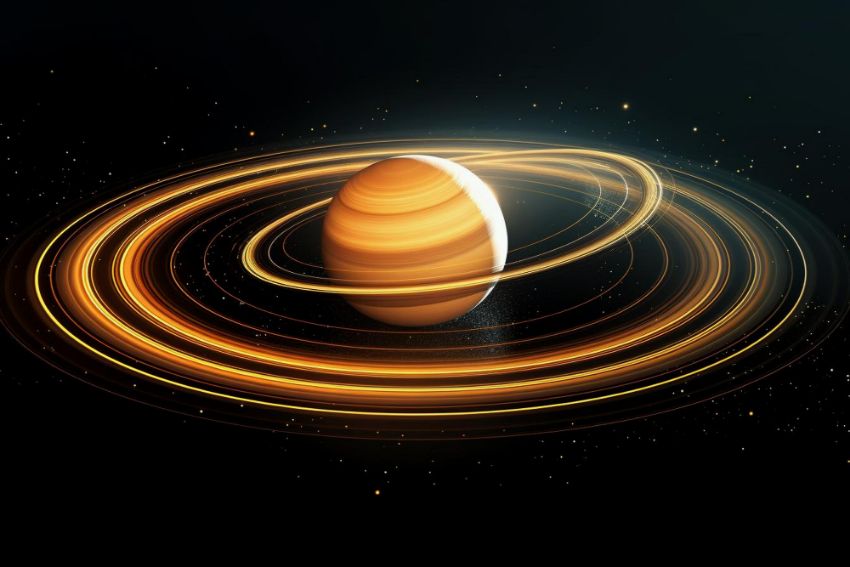When you gaze up at the night sky, you’re undoubtedly captivated by the twinkling stars and mysterious planets. One planet in particular, Saturn, is renowned for its spectacular ring system. However, did you know that it’s not the only one? Several other planets in our solar system possess their own unique set of rings. What could possibly be the reason for this fascinating phenomenon? And moreover, what does this tell us about the formation and evolution of our solar system? There’s more to this cosmic spectacle than meets the eye. Let’s explore further.
Understanding Planetary Ring Systems
Planetary ring systems, such as those found around Saturn, Jupiter, Uranus, and Neptune, are composed of concentric disks of dust and ice that orbit along the equatorial plane of these planets. Saturn’s ring system is particularly noteworthy due to its size and visibility. The rings consist of particles of varying sizes – from microscopic dust to large ice and rock fragments.
The rings’ structure and composition are influenced by Saturn’s moons, which interact with the ring material, generate additional content for the rings, and are responsible for the formation of gaps or structures within the system. The study of Saturn’s rings and other similar planetary ring systems can offer important insights into the processes of planetary formation and the nature of interactions in space.
Therefore, when observing Saturn, one should consider the complex interplay of ice, dust, moons, and gravitational forces that define its system.
The Spectacular Rings of Saturn
Saturn’s rings, the most expansive of any planet in our Solar System, consist of billions of particles of water ice. These particles vary significantly in size, from minuscule grains to substantial boulders.
The rings are divided into distinct sections, labeled A to G, each demonstrating different characteristics. Images provided by the Cassini spacecraft showed the impressive thinness of the rings, measuring only about 30 feet in thickness. However, the diameter of the rings is vast, extending over 175,000 miles.
The ring particles are affected by gravitational interactions with Saturn’s moons, resulting in constantly shifting patterns. Such observations contribute to our understanding of planetary formation and dynamics.
Rings of Other Outer Planets
Beyond Saturn in the solar system, the outer planets Uranus and Neptune also possess noteworthy ring systems. The ring system of Uranus, which was discovered in stages between 1977 and 2005, comprises 13 distinguishable rings. These rings span approximately 35,000 miles from the planet and are primarily composed of sizeable boulders, a composition that sets them apart from other outer planetary rings.
These rings are unique due to their composition of primarily sizeable boulders, distinguishing them from other outer planetary rings. The ring system of Uranus was discovered in stages between 1977 and 2005, comprising 13 distinguishable rings that span about 35,000 miles from the planet.
On the other hand, the ring system of Neptune was officially confirmed by Voyager 2 in 1989. Unlike the rings of Uranus, Neptune’s rings contain a dark material, a combination of methane and ammonia ice. Thus, the ring systems of Uranus and Neptune, while both situated in the outer regions of the solar system, exhibit significant variations in their structure and composition.
Inner Planets Vs Outer Planets
Uranus and Neptune illustrate the variety of ring systems present in the outer parts of our solar system. It’s also informative to analyze why inner planets such as Earth and Mars don’t have this feature. Outer planets, including Saturn, possess rings due to their larger size, greater number of moons, and location in the colder, outer regions of the solar system.
Here are some key distinctions:
- The rings of outer planets are comprised of dust, ice, and rock particles. Conversely, the conditions on inner planets aren’t conducive to ring formation.
- Terrestrial planets could have had temporary rings as a result of collisions, but they lack the constant ring systems seen around outer planets.
- The clear difference in rings between inner and outer planets highlights the varied formations within our solar system.
Rings in Exoplanetary Systems
Outside our Solar System, there are intriguing instances of ring systems in exoplanets such as Super Saturn, also known as j1407b. Situated 420 light-years away, this exoplanet possesses an impressive ring system composed of 37 substantial rings that stretch across 110 million miles. The ring system of Super Saturn exceeds that of Saturn’s in both scale and complexity.
Evidence suggests that Super Saturn could have an emerging satellite system. This theory is supported by the observed gaps in its rings, which indicate the potential presence of moons that are forming pathways through the surrounding dust and debris.
The planet’s elliptical orbit also plays a role in the stability of its rings. Computer models have demonstrated the possibility of these rings maintaining a state of retrograde motion.
Evolution and Formation of Rings
The ring systems of distant exoplanets, such as Super Saturn, offer intriguing insights into the evolution and formation of these celestial structures. For instance, it’s posited that Saturn’s rings were formed from disintegrated moons or particles captured by the planet’s gravitational pull.
These rings have undergone distinctive evolutionary processes:
- They function as a recycling system, where particles collide and reform continually.
- New moons could potentially form from the particles within these rings.
- They maintain a state of equilibrium to prevent objects from drifting away.
Importantly, these rings aren’t recent formations. In fact, some particles in Saturn’s rings are considered to be ancient, contributing to the ongoing research into their formation and evolution.
Conclusion
So, you’ve journeyed through the cosmos, understanding that it’s not just Saturn with its spectacular rings, but other outer planets as well.
You’ve also seen that inner planets differ greatly. Even exoplanets have these fascinating structures.
Knowing the evolution and formation of these rings, you can now truly appreciate the breathtaking beauty and complexity of our universe.
Remember, the cosmos isn’t just about stars and galaxies; it’s also about the unique features each planet offers, like these captivating rings.
Related articles:

Leave a Reply